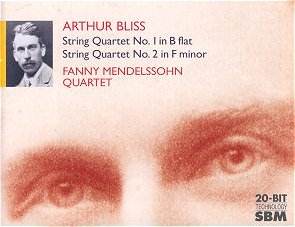 Composer: Modest Mussorgsky (orch. Maurice Ravel)
Composer: Modest Mussorgsky (orch. Maurice Ravel)
Works: Pictures at an Exhibition, Rapsodie espagnole, Ma Mère l’Oye, Boléro
Performers: Boston Symphony Orchestra, Serge Koussevitzky (conductor)
Recording: Symphony Hall, Boston, October 1930 (Pictures); April 1945 (Rapsodie); October 1947 (Ma Mère l’Oye); Tanglewood Music Shed, Lenox, Massachusetts, August 1947 (Boléro)
Label: NAXOS HISTORICAL 8.110154
Serge Koussevitzky’s interpretations of seminal orchestral works stand as a testament to the artistry of the early 20th century, and this Naxos Historical release offers a remarkable glimpse into his genius through a selection of cornerstone pieces. The inclusion of Mussorgsky’s “Pictures at an Exhibition,” masterfully orchestrated by Ravel, alongside Ravel’s own “Rapsodie espagnole,” “Ma Mère l’Oye,” and “Boléro,” encapsulates the lush, evocative soundscapes that characterized this era, as well as Koussevitzky’s profound understanding of orchestral color and texture.
Koussevitzky’s reading of “Pictures at an Exhibition” is nothing short of revelatory. Recorded in 1930, the performance is imbued with an urgency and vitality that resonates even through the decades. From the outset, the brass’s sonorous opening establishes a commanding presence, and as the strings enter, their burnished tone and depth evoke the grandeur of the original piano score. The “Samuel Goldenberg und Schmuÿle” episode showcases the cellos and basses with a richness that is rarely matched, their dialogue vividly delineating the contrasting characters. Notably, the “Ballet of the Unhatched Chicks” is animated by chattering woodwinds, a charming detail that reveals Koussevitzky’s meticulous attention to orchestral detail. The climactic “Great Gate of Kiev” crowns the performance with a resplendent majesty that feels both celebratory and introspective.
The coupling of Ravel’s works is particularly astute, as Koussevitzky’s interpretive prowess shines across these pieces. The “Rapsodie espagnole,” recorded in 1945, begins with a stunning “Prélude à la nuit,” where Koussevitzky’s masterful coloristic instincts come to the fore, creating a sound world that is both haunting and lush. The “Malagueña” is a highlight, revealing an extraordinary command of rhythm and texture that brings Ravel’s vibrant orchestration to life. Likewise, “Ma Mère l’Oye” is executed with an enchanting clarity, capturing the fairy-tale essence of the score with a delicate touch that is both playful and poignant.
However, the “Boléro,” recorded in 1947, presents a slight departure from the otherwise flawless execution. While Koussevitzky maintains the hypnotic rhythmic drive essential to the piece, there are moments where the ensemble feels less cohesive, particularly in the trombone entry around the 7:28 mark, which lacks the precision one might expect. This minor inconsistency stands in stark contrast to the otherwise polished orchestral performance, yet is redeemed by the glorious strings that enter later, reaffirming the piece’s inherent beauty.
The sound quality of this historical recording is a testament to the remarkable restoration efforts by Ward Marston and Mark Obert-Thorn. Despite the limitations of mono recording technology from over seventy years ago, the clarity and warmth of the orchestral textures allow the listener to appreciate the nuanced dynamics and timbral richness in Koussevitzky’s conducting. The engineering captures the spatial qualities of Symphony Hall and Tanglewood, ensuring that the listener is enveloped in the sonic experience.
This collection not only celebrates the artistry of Koussevitzky but also serves as a crucial historical document of orchestral performance practice. While various renditions of “Pictures at an Exhibition” exist, Koussevitzky’s interpretation remains a benchmark, distinguished by its emotive power and orchestral brilliance. The coupling of Ravel’s masterpieces enriches the listening experience and underscores Koussevitzky’s legacy as one of the great conductors of his time. Audiences and collectors alike will find that this disc, with its invaluable historical context and exceptional musicality, deserves a prominent place in any serious classical music library.



